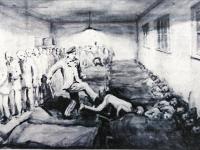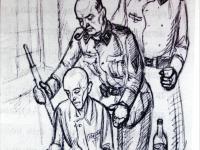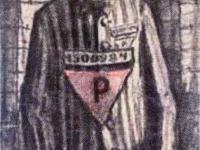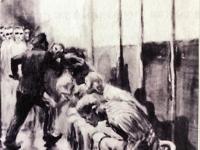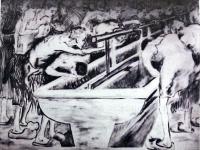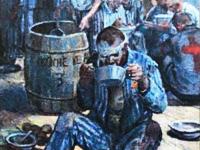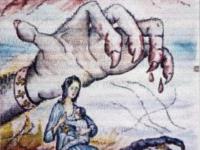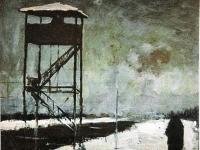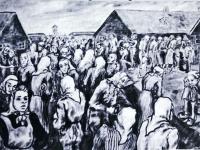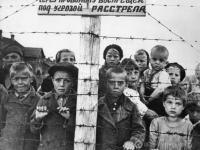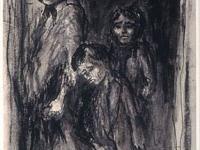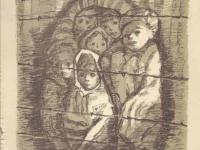The International Day of the liberation of Nazi concentration camps is a day when the world pays tribute to the mournful memory of the victims of Nazism who died in fascist concentration camps.
According to the decision of the UN General Assembly, this date was established in memory of the international uprising of the prisoners of the largest concentration camp - Buchenwald. It was on April 11, 1945, that the last prisoner left its gates with the infamous inscription "Jedem das Seine" - "To each his own". After that, the wave of liberation reached other concentration camps - Dachau, Auschwitz, Majdanek, etc. And since then, this memorable date hurts an unhealed wound in the hearts of the peoples of the world.
In 1937, eight kilometres from the city of Weimar - the cultural and spiritual center of Germany, with which the names of Goethe, Schiller, Bach, and Liszt are associated - the Nazis built the Buchenwald concentration camp. The first victims of this "factory of death" were German communists and social democrats. In total, the concentration camp contained representatives of 32 nationalities from 18 countries. Since the summer of 1940, a crematorium has been operating here. There were 52 main barracks in the camp. The number of guards reached 6,000. In September 1941, the first Soviet prisoners of war were shot near the camp. Every day, thousands of people died here: they were stoned to death, cut to death, drowned in manure, castrated, mutilated, and starved to death. According to estimates, about 50,000 people died in Buchenwald — mostly Jews and political prisoners, but also Soviet (including Ukrainian) prisoners of war, Gypsies.
The Nazis abused the prisoners from the Soviet Union with particular pleasure. A special unit was assigned to them, the so-called "small camp", which consisted of 12 barracks. Bunk beds were placed for prisoners on 3-4 floors and held 750 prisoners. 100 people died every day. The prisoners carried the bodies of the dead to the morning roll call only to receive a paltry portion of their food, which consisted of a small piece of stale bread.
Among the prisoners of Buchenwald were people who, despite malnutrition, hard work and brutal treatment by the SS, found the strength to organize underground and raise an armed uprising.
In March 1945, the German command and the main part of the guard escaped from the camp before the threat of being captured by American troops. Then, just before the arrival of the Americans, an armed uprising, organized by the prisoners themselves, broke out on the territory of Buchenwald (the largest concentration camp). When American troops entered the Buchenwald concentration camp, the rebels had already taken control of the death camp, and a red flag was raised over the camp. April 11 - the day the Americans entered the territory of Buchenwald - was adopted as the date when the International Day of the liberation of Nazi concentration camps is celebrated.
During the Second World War, there were over 14,000 concentration camps, prisons, and ghettos on the territory of Hitler's Germany and the countries occupied by it. During the Second World War, 18 million people passed through the death camps, including 5 million citizens of the Soviet Union. 12 million did not see liberation, including about two million children.
Four concentration camps operated in Kyiv during the war:
- Syrets concentration camp;
- Darnytskyi concentration camp;
- the concentration camp on Kerosynnaya Street (modern Sholudenka Street, the territory of the "Start" stadium), in which the Nazis held about 8,000 Soviet prisoners of war and more than 3,000 soldiers and civilians of Jewish nationality;
- located on the street Instytutska, 5 - a construction camp for Jewish men.
Every year on this day, Ukraine, together with the whole world, bows to people who passed through the horrors of Nazi torture camps. The memories of these people are real lessons of courage for today's young generation.
Materials stored in the funds of the National Historical and Memorial Reserve "Babyn Yar" are presented below. They are being printed for the first time.
| Attachment | Size |
|---|---|
| 1.52 MB | |
| 1.91 MB | |
| 3.64 MB | |
| 1.97 MB | |
| 2.87 MB | |
| 628.76 KB | |
| 3.35 MB | |
| 2.42 MB | |
| 779.41 KB | |
| 4.63 MB | |
| 2.59 MB | |
| 5.28 MB | |
| 122.29 KB | |
| 4.14 MB | |
| 4.78 MB | |
| 4.54 MB | |
| 4.54 MB |


















